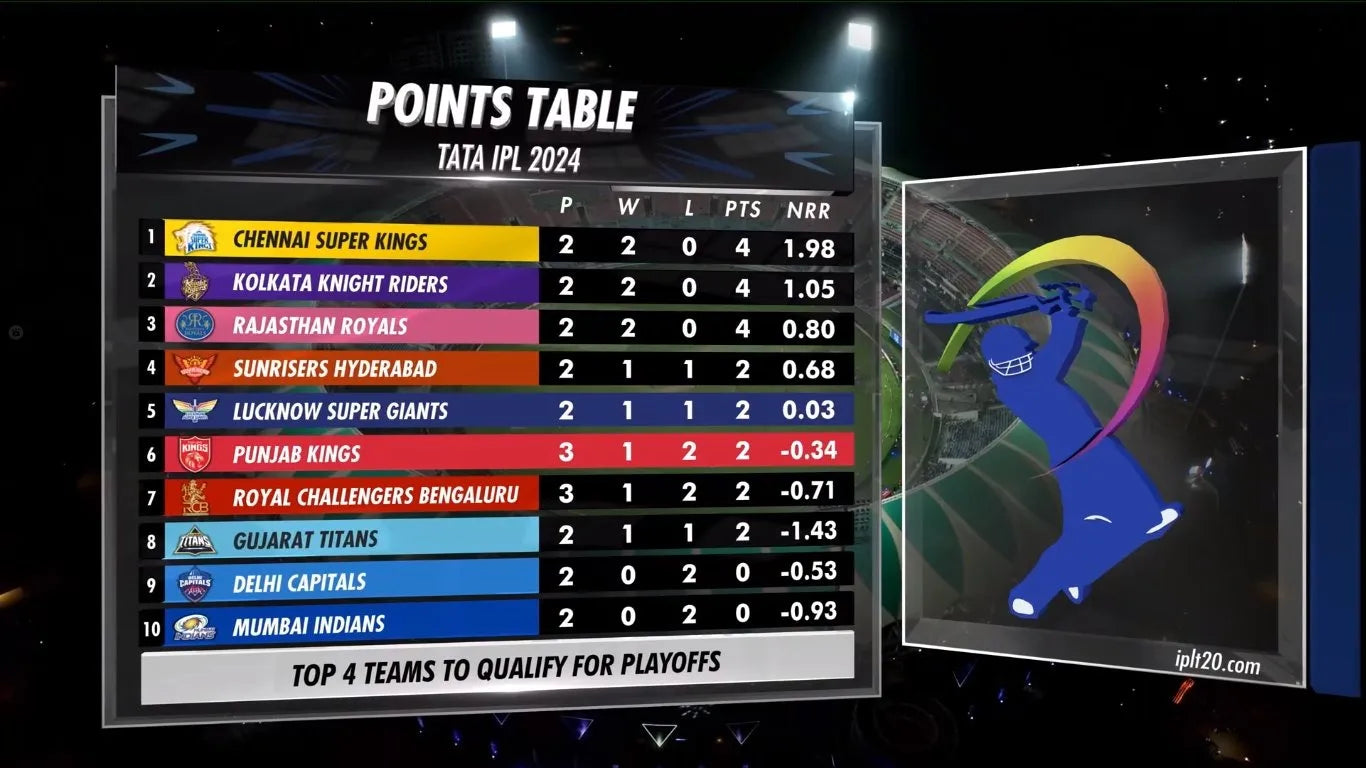What is Net Run Rate (NRR) in Cricket and how to Calculate it?
There are many metrics in cricket that leave us fans confused about how they work and how to calculate them. DLS (Duckworth Lewis Stern Method) is one of the biggest examples of such a metric, which, though people know it can play a major role in deciding the winner of a rain interrupted match, not many know how to calculate it. Similarly, there’s batting strike rate and batting average in cricket, which gives fans a turn for their heads while calculating. But there’s one more calculation that plays a big role in a league tournament format, and that is the Net Run Rate in Cricket. We have seen the Net Run Rate (NRR) in the IPL plays an important role in a team making it into or missing out on the playoffs. But what is NRR in Cricket and how do we calculate it?

In this article by ZAP, let’s know what Net Run Rate actually means and learn how to calculate it.
What is Net Run Rate (NRR) in Cricket?
The goal difference in football is an efficient tiebreaker for football teams in a league, that calculates the difference between the number of goals a team scored and the number of goals that we scored against them. The Net Run Rate in Cricket follows the same idea.
Also Read: Cricket vs Football
Net Run Rate is a way to figure out how well a cricket team is doing in a tournament like in the IPL, or the World Cup. It acts as a tiebreaker for teams that have the same points in a league. The first ever use of the NRR was at the 1992 ICC ODI World Cup.

For example, if the Mumbai Indians and Chennai Super Kings both have 8 points, but MI has a NRR of 2 and CSK has 2.3, CSK will be higher on the points table.
NRR shows how many runs a team scores compared to how many runs they let the other team score. If a team has a positive NRR, it means they are scoring faster than their opponents overall. But if it's negative, it means they're scoring slower. This metric is used mainly only in shorter cricket formats like ODIs, T20s, and T10s. It's not used in Test cricket because overs played aren't as important.
How to Calculate Net Run Rate (NRR) in Cricket?
Cricket Net Run Rate Calculator:
- Calculate the Run Rate (RR) for each team in a match:
- RR is the average number of runs scored per over by the whole team in the whole inning.
Formula:
Run Rate = Total runs scored / Total overs faced
Example:
- RCB scores 200 runs in 20 overs.
Run Rate for RCB = 200 / 20 = 10.
- SRH scored 180 runs in 19 overs but lost all wickets. Since it is a 20 over game, the entire 20 overs will be considered.
Run Rate for SRH = 180 / 20 = 9.
- Calculate the Match NRR for each team:
- Match NRR is calculated by subtracting the opponent's Run Rate from the team's Run Rate.
Formula:
Match NRR = Team’s Run Rate − Opponent’s Run Rate
Example:
- RCB scores at a rate of 10 runs per over, and SRH scores at a rate of 9 runs per over.
RCB’s Match NRR = 10 – 9 = 1
SRH’s Match NRR = 9 – 10 = -1.
- Calculate the Tournament NRR for each team:
- Tournament NRR is the sum of all runs scored and conceded across all matches in the tournament.
Net Run Rate Formula:
Tournament NRR = (Total runs scored in all matches / Total overs faced in all matches) – (Total runs conceded in all matches / Total overs bowled in all matches)
Example:
- RCB’S total runs scored in all matches = 287 + 265 + 295 + ... (add runs from all matches)
- RCB’s total overs faced in all matches = 50 + 50 + 50 + ... (add overs from all matches)
- Similarly, calculate total runs conceded and total overs bowled for all matches.
- Then, apply the formula to find the Tournament NRR.
Example Calculation:
Let's take an example with made-up numbers for simplicity:
- RCB:
- Total runs scored in all matches = 1500 runs
- Total overs faced in all matches = 250 overs
- Total runs conceded in all matches = 1400 runs
- Total overs bowled in all matches = 245 overs
Tournament NRR for Team A:
Tournament Net Run Rate = (1500 / 250) – (1400 / 245)
So, RCB’s tournament Run Rate = 6.00 − 5.71 = 0.29
This positive NRR indicates that Team A is scoring faster than their opponents on average across all matches in the IPL.
Conclusion:
The Net Run Rate, though, is an important stat and acts as a fitting tie breaker for teams level on points in a league table, there are some drawbacks and some other alternative are also proposed instead of using it. Firstly, it doesn't consider wicket loss, meaning that a narrow victory can result in a higher NRR than a comfortable one. Secondly, there's a risk of manipulation, as teams might intentionally reduce their margin of victory to improve their NRR artificially. To address these issues, several alternatives to NRR have been suggested. These include using the Duckworth-Lewis-Stern method to standardise the length of every innings, calculating tournament NRR as the average of individual match NRRs to ensure equal weighting of matches, or using head-to-head records or playoffs to split teams level on points. However, these alternatives have their limitations and may not cover all scenarios.
Now that you have understood how to calculate Net Run Rate in Cricket, here are some more articles we recommend you read:
Powerplay in Cricket | Decision Review System (DRS) | Fielding Setting in Cricket




Leave a comment